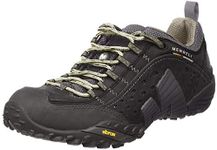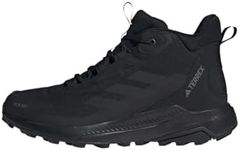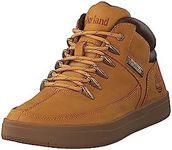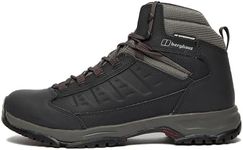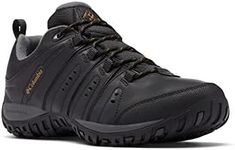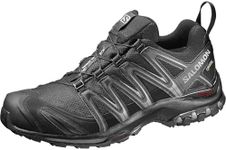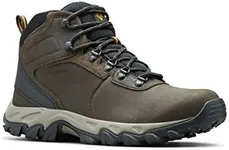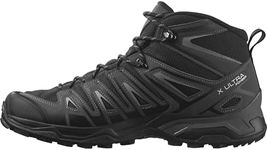Buying Guide for the Best Hiking Shoes For Men
Choosing the right hiking shoes is crucial for a comfortable and safe hiking experience. The right pair will provide support, stability, and protection for your feet, allowing you to enjoy your outdoor adventures without discomfort or injury. When selecting hiking shoes, consider the type of terrain you'll be hiking on, the duration of your hikes, and your personal comfort preferences. Here are some key specifications to consider when picking the best hiking shoes for you.Fit and ComfortFit and comfort are the most important factors when choosing hiking shoes. A good fit ensures that your feet are well-supported and reduces the risk of blisters and other foot injuries. Hiking shoes should fit snugly around your heel and midfoot, with enough room in the toe box to wiggle your toes. Try on shoes with the socks you plan to wear while hiking and walk around to ensure they feel comfortable. If you have wide or narrow feet, look for brands that offer different width options.
Type of Hiking ShoeThere are different types of hiking shoes designed for various terrains and hiking styles. Lightweight hiking shoes are ideal for day hikes on well-maintained trails, as they offer flexibility and breathability. Midweight hiking shoes provide more support and durability, making them suitable for longer hikes and rougher terrain. Heavyweight hiking boots offer maximum support and protection, perfect for backpacking trips and challenging trails. Choose the type that matches the intensity and duration of your hikes.
MaterialThe material of hiking shoes affects their weight, breathability, and durability. Leather shoes are durable and offer excellent support, but they can be heavier and less breathable. Synthetic materials like nylon and polyester are lighter and more breathable, but they may not be as durable. Waterproof materials, such as Gore-Tex, keep your feet dry in wet conditions but can reduce breathability. Consider the climate and terrain of your hikes to decide which material is best for you.
TractionTraction is essential for maintaining stability on various terrains. The outsole of the hiking shoe should have a good tread pattern to provide grip on different surfaces, such as mud, rocks, and loose gravel. Deeper lugs offer better traction on rugged terrain, while shallower lugs are suitable for well-maintained trails. If you plan to hike in wet or slippery conditions, look for shoes with a rubber compound that provides extra grip.
Support and StabilitySupport and stability are crucial for preventing injuries and ensuring comfort on uneven terrain. Hiking shoes with a sturdy midsole provide cushioning and support for your feet, reducing fatigue on long hikes. A shoe with a higher ankle collar offers more stability and protection against ankle sprains, which is important for rough or uneven trails. If you have a history of ankle issues or plan to carry a heavy backpack, opt for shoes with more support.
WeightThe weight of hiking shoes can impact your overall hiking experience. Lighter shoes reduce the amount of energy you expend, making them ideal for shorter hikes and well-maintained trails. Heavier shoes provide more support and durability, which is beneficial for longer hikes and challenging terrain. Consider the length and difficulty of your hikes to determine the appropriate weight for your hiking shoes.
Water ResistanceWater resistance is important if you plan to hike in wet conditions or cross streams. Waterproof hiking shoes keep your feet dry and comfortable, but they can be less breathable, which may lead to sweaty feet in warm weather. Water-resistant shoes offer a balance between breathability and protection from moisture. If you hike in varying conditions, consider shoes with a water-resistant treatment rather than fully waterproof shoes.





